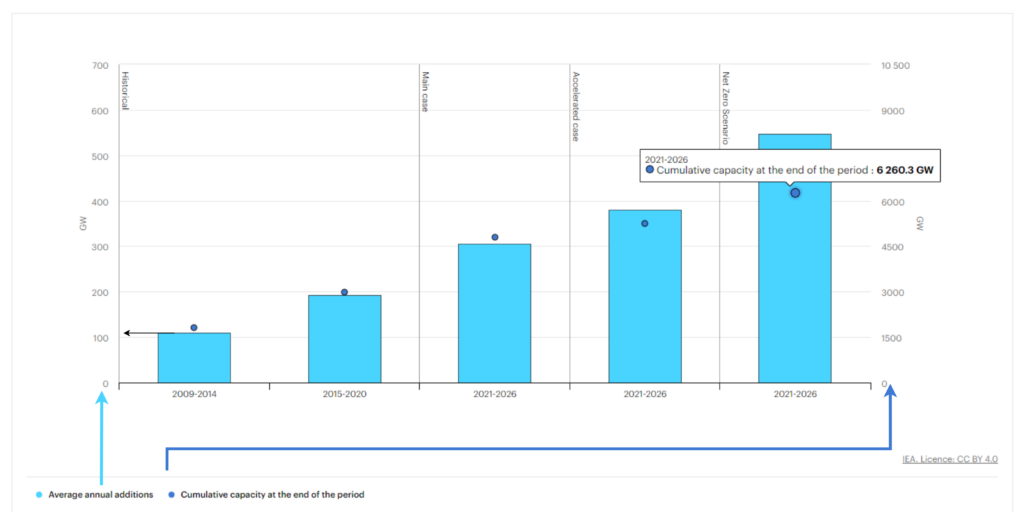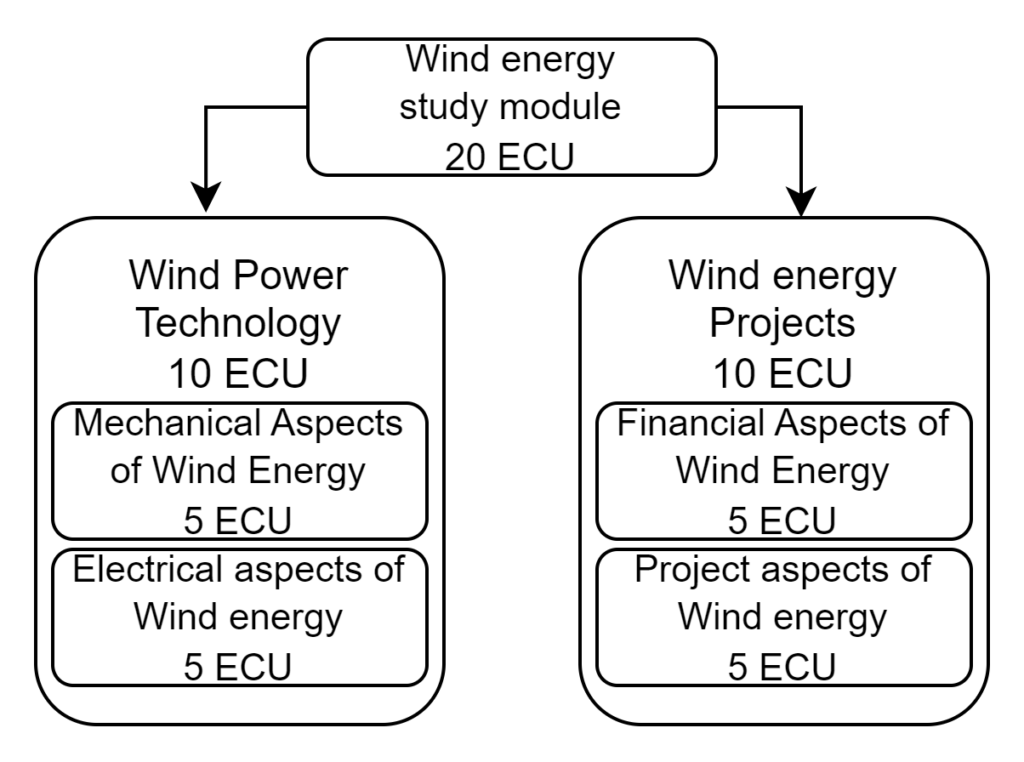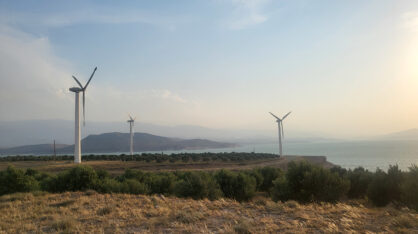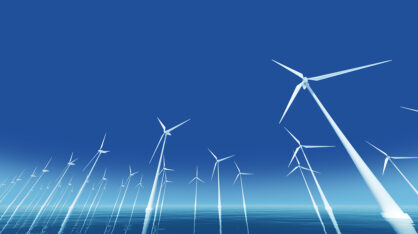Introduction
The global acceptance of wind energy as a mainstream renewable power generation mode is at a good level and continues to grow steadily. Wind energy technology has become increasingly accessible, the technology has reached a good maturity level, and scaling up turbine output capacities has made investing in wind energy quite attractive. Still, undertaking a wind generation park project is a major project initiative covering various knowledge areas and needs several experts in select areas. One needs to understand the intricacies of wind farm permitting and background research, wind energy business models, pre-project requisites, as well as technology selection.
The challenge degree students and professionals alike face presently in Finland is that this type of information and knowledge is usually scattered under various authorities and different study modules. This article proposes that it will be beneficial to bring these scattered learning courses under one study module designed specifically to serve learners at various levels.
Wind energy status and forecasts
The future of renewable energy looks bright. Between 2021 and 2026, annual additions to global renewable electricity capacity are expected to average around 305 GW per year, as highlighted in the recent IEA Renewables 2021 forecast report. This translates to an acceleration of almost 60% compared to the expansion of renewables during the 2009 to 2020 period. This can be seen from the illustration below in Figure 1, where the first two columns show average and annual additions during the 2009 to 2014 period reaching just over 100GW and later in the 2015 to 2020 period almost doubling to nearly 200 GW capacity. Additionally, increased awareness at the highest levels of government has resulted in strong policy support in more than 130 countries. More ambitious net zero goals are announced by several countries accounting for almost 90% of global GDP. The effect of a Net-zero scenario can be seen in Figure 1 below in the last column, where annual installations are estimated to be around 550 GW annually to bring the cumulative installed capacities to over 6000 GW. (IEA, 2021).

Wind energy and employment
According to the Finnish Wind Power Association, the total reported installed wind power cumulative capacity in Finland reached 5677 MW by the end of 2022. The year 2022 was an exceptional year in Finland with 437 additional wind turbines installed and a capacity increase of 2430 MW. These installed projects are expected to generate around 55,800 man-years of work for Finns over a 20-year project lifespan. These man-hours will come from job functions in several project phases and functions like project and equipment design, construction, operation, and maintenance of wind power projects, as well as subcontractors in the entire supply chain (FWPA, 2022). The list of project lifecycle phases of a typical onshore wind power project and the related man-years involved can be seen in Table 1 below. The term “Direct” used in this context relates to jobs and efforts relating to wind turbine technology, equipment design, projects and energy produces therefrom. The term “Indirect” refers to jobs and functions that enable and support the wind energy industry, for example, a bank or insurance agent specializing in wind energy projects.
| Phases of wind power project | Direct and indirect man-years involved |
|---|---|
| Project planning and design | 1 500 (Direct man-years) |
| Construction and logistics | 13 000 (Both, direct and indirect) |
| Operation and maintenance | 37 800 (Indirect) and 2 200 (Direct) |
| Deconstruction and demolition | 1 300 (Indirect) |
Development of competence in the wind industry
The development of the wind energy study module should be based on real-life cases and business scenarios in the wind energy industry. It is therefore important to design such a module in cooperation with wind energy companies in the Ostrobothnia region.
Research suggests that education is in a crucial role, not only to develop trained resources for the industry but also results in greater public awareness of technology, developing market and consumer confidence in the technology. An industry-wide survey performed in Australia (Jennings, 2009), suggests that wind energy study modules be designed and delivered for learners in three distinct levels, basic, comprehensive and advanced levels. An interpretation of these three levels is presented in the list below.
- Level A, are freshmen Bachelor of Engineering students with lower or no prior working experience in the wind energy industry.
- Learners at this level should be given knowledge of, the basics of wind turbine technology, physics, and wide-ranging knowledge of mechanical and electrical engineering.
- Additionally, knowledge of business models, project management, contracts and environmental regulations will be advantageous.
- Level B, are typically Masters of Engineering level learners already working in the industry directly or indirectly related to wind energy and aiming towards career advancements or enhancing their expertise
- Learners at this level need specific in-depth knowledge in specific areas, depending on their work function, industry and previous knowledge level.
- Learners at this level need specific in-depth knowledge in specific areas, depending on their work function, industry and previous knowledge level.
- Level C learners are typically specialists and professionals in non-engineering services that are interested in the wind energy sector and may be indirectly working with the wind energy sector.
- Learners at this level need generalized and overall information in a compact package. They do not intend to become experts in wind energy but need to know the basics, some facts and business statistics.
- For these levels customized and specific “Made to order” seminar-based fast-track courses will be advised, where industry experts can be invited as guest speakers.
Overall, the wind energy study module should be designed in such a manner that it may benefit degree students as well as industry professionals. The study module should also have some parts that can be customized for industry professionals to be offered as “on-demand” courses.
Wind energy knowledge areas
Wind energy equipment manufacturers and project companies require different competencies in different technology and project lifecycle phases. This need can be reflected in the study module by providing module options as shown below in Figure 2.

The entire study module could be of 20 European Credit Units (ECU) worth. Study module courses can be comprised of two main knowledge areas, Wind energy Technology and Wind Energy projects. Learners will have a total of four-course packages, divided into the knowledge areas, as shown above in Figure 2.
The project lifecycle learning aspect should be introduced as a part of the “Project aspects of Wind Energy, 5 ECU” course package. As shown below in Figure 3 based on (Heneghan, 2019), the project lifecycle stages start with project feasibility studies and end when the wind turbines reach their rated or maximum operative life and are finally decommissioned.

Examples of wind energy study modules
A similar model structure has been proposed earlier in VAMK in 2010, named “Wind Energy and Business”. This module was delivered by the Business and Communications department. The study and proposal were part of a Nordic Council of Ministers-funded development project “Kvarken Vind”. The overall response from learners was positive and it generated good cooperation with the local wind energy businesses (Koskinen, 2010).
Presently, Aalto University is offering an “Advanced Wind Power Technology D” study module within the Department of Applied Physics. This is a twelve-session, two hours for each session, study module with and written exam. The speciality of this program is that the lecturers are from wind energy consultancy companies or then research institutes like VTT and Aalto itself. This is not a comprehensive study module but rather a seminar-style 5-credit unit Master’s level course (Aalto University, 2023).
A good benchmark study module as proposed in this article is offered by the Technical University of Denmark. The program structure of the Danish course is based on 11 courses in total including planning and project design, wind turbines technology courses, as well as some courses relating to human aspects of technological development. The module is well-balanced with solid technological content (DTU, 2023).
Conclusion
An interactive wind energy study module should be designed to make learning about wind energy exciting and engaging. The present-day educational scenario is such that the participant will typically prefer web-based courses that include interactive elements such as animations, simulations, and games. These features help to keep learners engaged and motivated throughout the learning process.
One of the main features of an interactive wind energy study module should be that it attempts to provide a comprehensive overview of the subject matter. The scope should cover everything from the basics of wind energy technology to more advanced topics such as wind turbine component design, supply chains, site conditions-related engineering, and most importantly the environmental and economic aspects. Such a comprehensive package will require not only good course planning but also close cooperation with wind energy projects and wind energy project companies.




